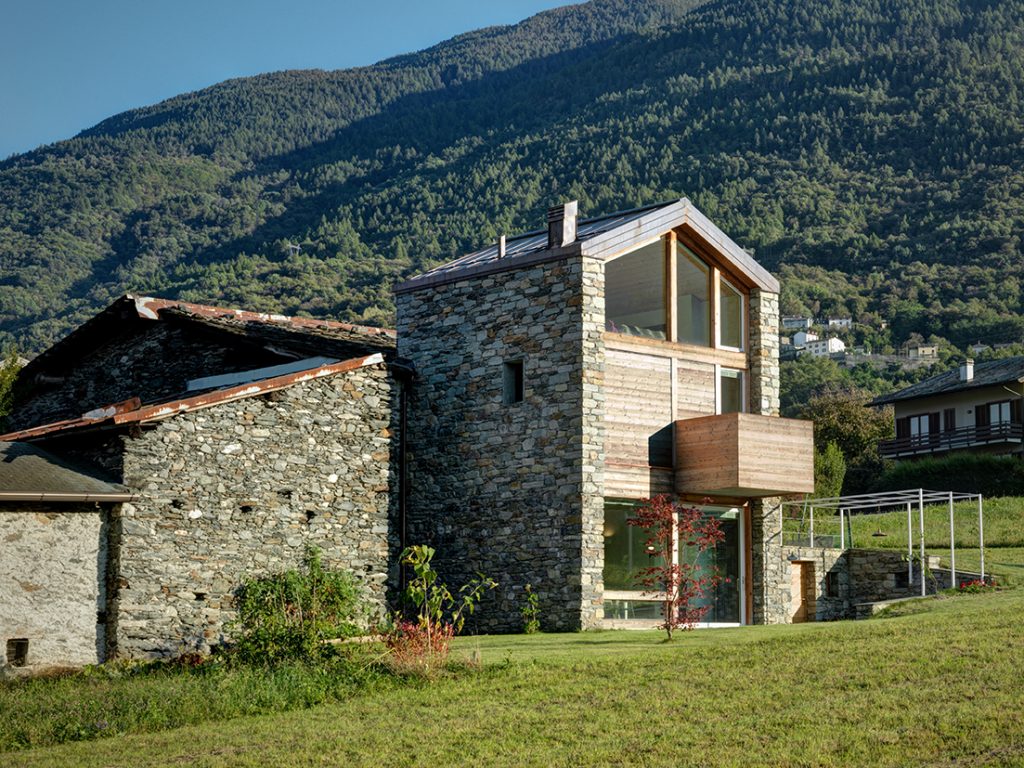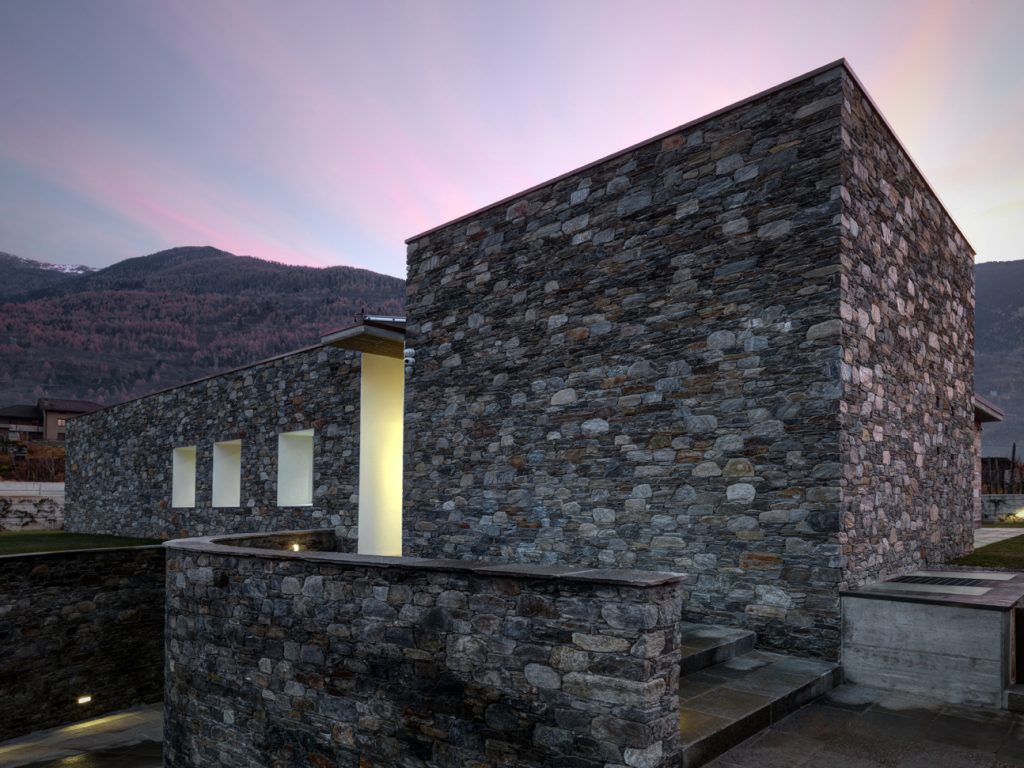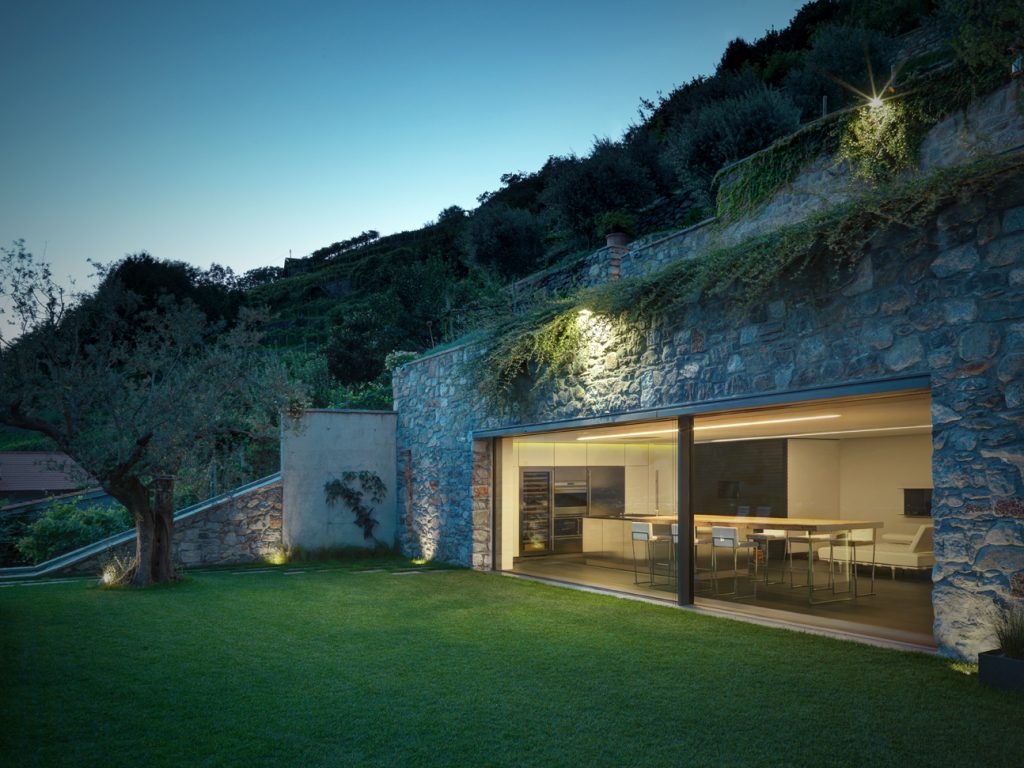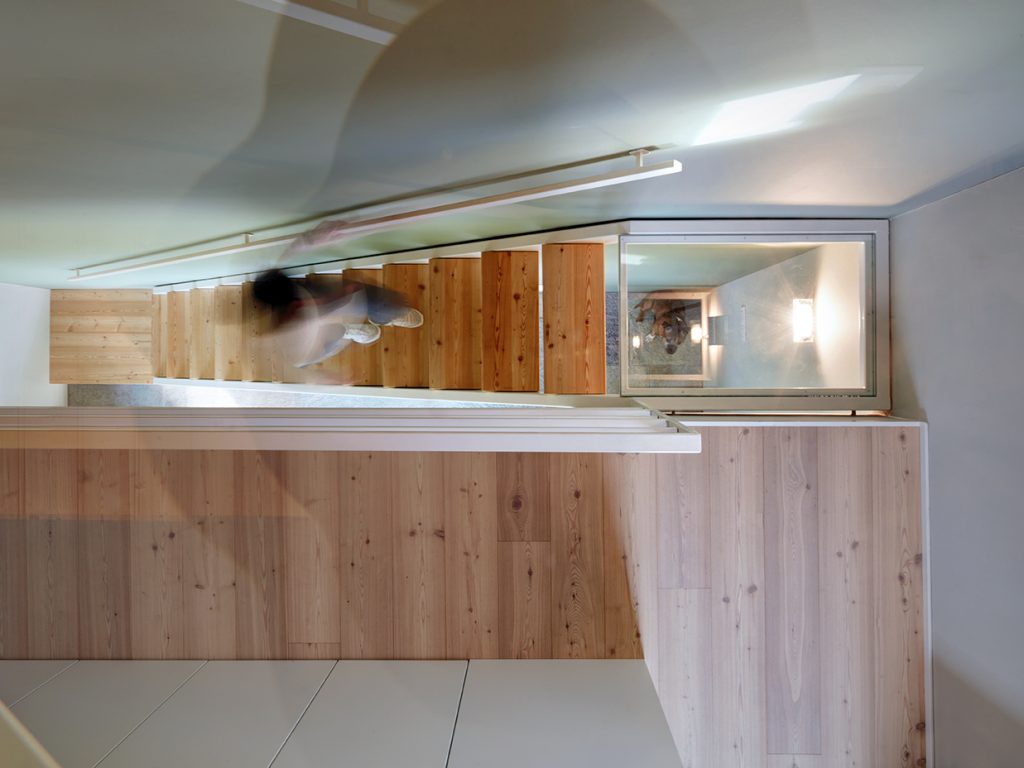I don’t know why. I can say that I have always wanted to do it. In the family we had many connections with the world of art and furniture. Above all, my mother taught me to appreciate beauty as “beautiful philosophically”.
2. Can you tell us something about the A.G House?
A.G House in practice is a roof that contains the whole house. Inside we can find a mezzanine overlooking the glazed part and the kitchen on the ground floor. Below the mezzanine there is a closed part that houses a double bedroom and a bathroom.
In doing this project I wanted to respect the link with the territory, but at the same time to meet the needs of contemporary living. To put this into practice, which I could call a “transmutation of tradition”, I started using the materials that belong to the tradition, for example the roof instead of lamellar is in solid oak.
Now we find ourselves in a historical period a bit “strange” because almost nobody tries to use a language that has a following with respect to the previous one; now many people try to do things that have no connection with the past. From my point of view this approach has at least two problems, the first is that the little historical awareness hardly coincides with a reasoned project. The second we live in territories that have the usual materiality of our homes. It isn’t by chance that all our rural buildings are in stone, these houses that are still considered beautiful by all are perfectly integrated into the territory, something that often does not happen with modern architecture.
Sometimes looking at the landscape I wonder how the territory would be without the houses and almost always the answer is that it would be better. I think this is true except for those areas where there are houses built before the 60s.
Today, unlike in the past, we no longer feel the need to have a house that is the result of a cultural process; today a house is considered beautiful if it costs so much, nothing more.
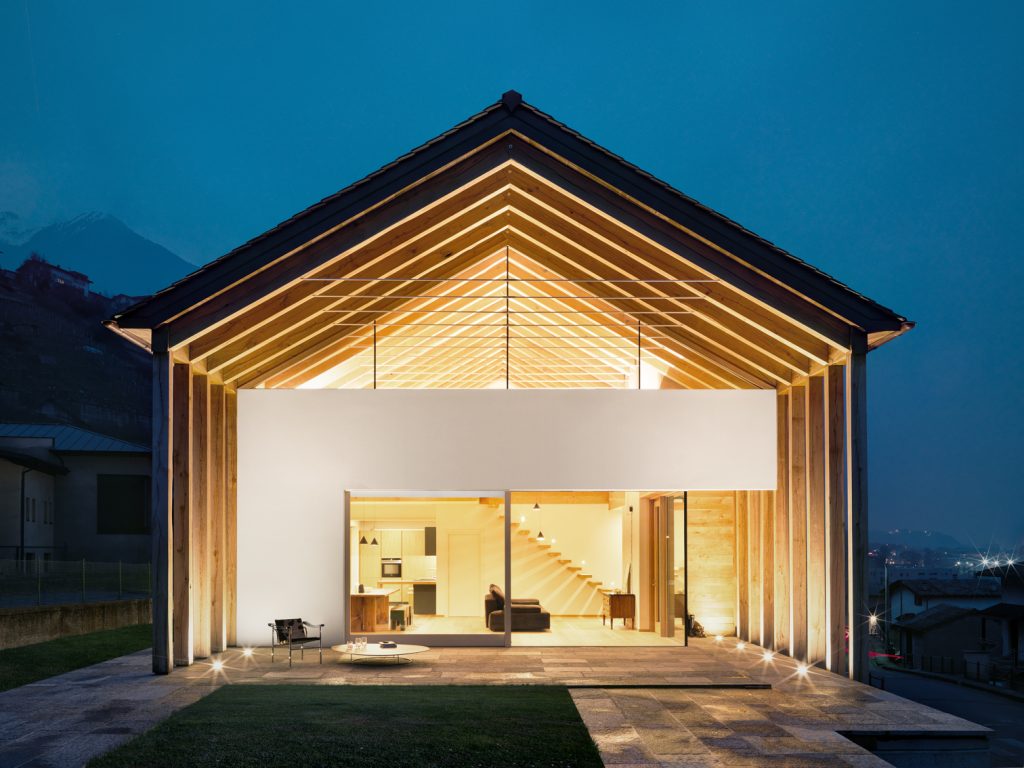


3. If I think of S.V. House or A.P. House I read contemporary lines, but the materials you use are strongly linked to the context. Could it be a right interpretation?
It’s a very right interpretation. They are two very different houses but the principle that managed me is always the same.
To understand it better I would like to tell you an anecdote. I recently completed houses in Tuscany near Arezzo; before tackling the project I wanted to understand the tradition and the construction techniques of their territory. One day, towards the end of the work, the owner of the construction company exclaimed “it seems we haven’t touched”! Please note that these two buildings were almost destroyed and receiving this comment made me realize that I had achieved my goal. In this project we used only recycled materials and where possible I rebuilt the collapsed parts. We have to respect the territory around us.


4. Could you tell us the main features of how you approach a new project?
In part I have already answered. One thing that I consider basic is to understand what the client’s expectations are and to realize a project to try and make them alive. What I really want is a better world and I think one of the pieces to reach it is also the quality of housing.
5. Most of your projects are private homes; in your opinion what are the essential needs that an architect has to satisfy when designing a house?
I have already answered this question partly. However I believe that the fundamental premise is to understand that to live well, few things are needed and that many apparently complex aspects of the contemporary are actually simpler than they seem. If I find myself in the mountains and I am in front of the fire with a glass of wine, this situation sometimes creates an atmosphere of exceptional conviviality. I think this as other situations likes everyone else, because from some point of view we all look for the same things.
6. According to the passage of decades, has the way of living in the house changed?
It has changed a lot. However, high values remain, such as the pleasure of warming up in front of the home fireplace.
7. If the way of living the house has changed, perhaps even architects have changed the way to design it?
Well I could say that the way of living the house has changed because architects have changed the way to design it! But today, too often, the housing project doesn’t help people who want to live in their own homes. Instead, living in your home is essential.

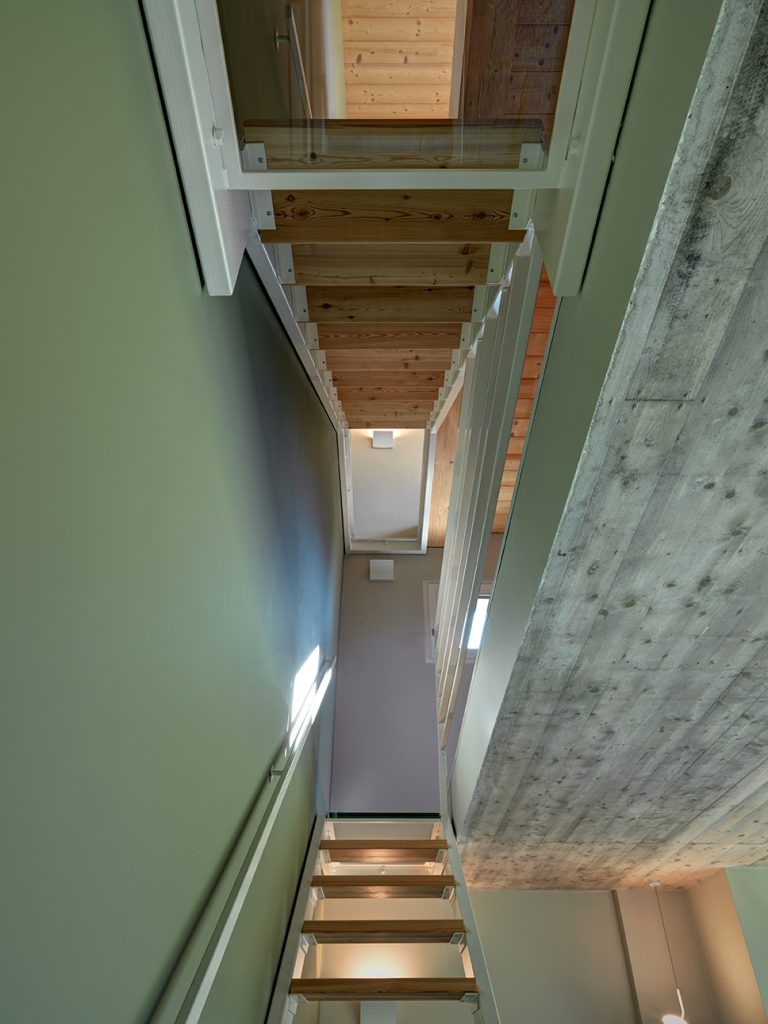
8. Now, a question that I will ask also to some other studios. Why do you think in the Northern part of Italy, at the borders with Austria and Switzerland, it is easier to find high-quality architecture?
This happens in particular in Trentino Alto Adige. I think politics that facilitates this situation is partly responsible, while in the rest of Italy it is becoming difficult to do anything. In addition they still have a line of architectural thinking that has disappeared elsewhere. Last simple thing but essential: they have more economic availability than other areas.
9. Do you think there is still an Italian style?
Architectural style, I would say no. At some point it is like if everything has been blocked. In the 60s, the quantity was spreading so much, quality started to lack. To give you an example that has impressed me, all the courts of the squares were made with a stone from the area, and in the 60s’ were all covered in concrete. This event, like so many others much more striking, in large part happened not because the people of the past had lost their heads, but because all that tradition remembered the past and therefore poverty. Now, instead, there is a search for lost traditions and materials.
10. In your projects there is a strong search for tradition even if inserted into contemporary living. What is your relationship with the most technological aspects?
The living comfort is now defined by the law so some choices are required by the legislation.
Having an attention to the environment it’s very important, but at the same time I don’t think the problems of the world are solved by installing fixtures with 10 layers of glass! The excessive amount of guidelines to be respected risks distorting the project. I believe that an architect has to manage the space and that it can make a beautiful construction even if there are not 35 ° degrees in all the rooms!
I think one of the problems is the fact that many people today do not know what they want from life, so they often look for the strangest things, not realizing that what they need is right next to them. Sleeping under a quilt with the cold room I see is much more fascinating than having a warm room. It is something ancestral, a primordial pleasure, feeling warm in a cool place.










